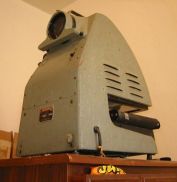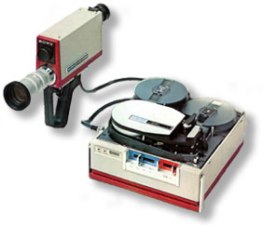Some stories from my past with particular relevance to the development of my interest in teaching and technology.
One day, my faculty adviser in the MFA program at Goddard College discussed at length the “aboutness” of my art, or rather, the way I discussed the aboutness of my art, referring to the required “artist’s statement” component of any artist’s resume, show brochure, or website. The “statement” is, for an artist, the obligatory textual description of what our artwork is all about, how it is made or inspired, etc. The common practice of explaining what the art means, and even the necessity that the art needs explanation at all is, I suppose, a comment on the contemporary condition of art itself. But that is the subject for another posting, or one of my other blogs (my artblog, here).
I always thought that “aboutness” was a particularly endearing term to use when discussing the process of how we represent ourselves. The faculty adviser, Pam Hall, is a tremendously sharp and thoughtful artist whose work resonated with my own, all about place, people, artifacts, history, and social and economic narrative. Which now leaves us to the aboutness of me.
Such statements are always framed by the particular view we with to create. Here, in this blog format, I am self-defined as a professor of educational media and technology with a rather lengthy resume of international work. I have lived and traveled in Africa, working with texts, technology and teaching and learning. Those experiences have greatly influenced my understanding of the particular cultural contexts of teaching methods and their use in knowledge and culture production. One of the most useful things I learned working internationally, was the more common use of the term “information and communications technology” (ICT) as applied to teaching and learning, and that “educational technology” is a particularly US-centric definition. I often, when given a choice, use ICT as a preferred term, rather than “educational technology,” as the latter invokes a particularly behaviorist approach, somewhat historically antiquated now and being challenged by more social constructionist and participatory epistemological models of knowledge creation and transmission.
Yeah… I kind of went over the top with that last phrase. More later…
That said, I’ve been an “ed tech” person since as long as I can remember. Allow me to me reminisce.
In 1966 our family moved to the San Francisco bay area. There was a great deal of technology education present in the region, with major tech companies of the time (Raytheon, Lenkurt, Honeywell, Kodak) engaged in what we would now call

“partnerships” with the local school districts. This was, after all, the fresh new age of the post-Sputnik drive for science and technology. The use of film, filmstrips, overhead transparencies, and the monstrous “opaque projectors” was prevalent. Overhead projectors were perhaps the most common technology. Their continued, albeit limited, use today is testament to the robust nature of the design and simplicity of the technology. Teachers could draw directly on ace tate or plastic film with erasable markers and project their work directly onto a screen for view by the entire class. Pre-made transparencies could also be supplied by curriculum publishers or the projector fitted with a roll of film, so once the space was filled, simply cranking the handle could move on to more space. This latter method was well liked by math teachers, who could scroll back and forth between earlier demonstration to review.
tate or plastic film with erasable markers and project their work directly onto a screen for view by the entire class. Pre-made transparencies could also be supplied by curriculum publishers or the projector fitted with a roll of film, so once the space was filled, simply cranking the handle could move on to more space. This latter method was well liked by math teachers, who could scroll back and forth between earlier demonstration to review.
Teachers would often show us 16mm film episodes of the CBS/Education sponsored “21st Century” series, narrated by Walter Cronkite. I was, naturally, an “AV Monitor,” responsible for moving wheeled carts with the Bell and Howell film projectors from our AV closet – replete with “cut and paste” 16mm film editing station, parts and repair bench – to and from the classrooms and operating the equipment. My ed tech training began early.
This was also ground zero for the great counter-cultural revolution taking place at the time, although North Beach and the Haight-Ashbury phenomena was a world away from our quiet bay area suburban existence. These tech company/school partnerships found their way to my 5th and 6th grade classrooms through the “Extended Studies” program, part of the Accelerated Learning research being conducted through Stanford University’s School of Education. 5th graders were tested and questioned, pre-selected in small cohorts and enrolled in the program. In 6th grade, parents carpooled us to the “annex” at JFK Jr. High School once a week. There were kids from 2 or 3 schools on our day, divided between two classrooms.
We had an enriched curriculum, which consisted of projects, technology, field trips, inquiry-based learning and all manner of educational innovation. Ceramics, oceanography, engineering, stock market investing, pin-hole camera photography, applied mathematics, group reading of “Our Town”, 8mm film loop machines with inquiry modules…. very enriched for 6th grade. By comparison, regular school, for the other 4 days a week, seemed pretty boring. Hanging around after the bell one afternoon, waiting for our ride, a friend and I were interested in a particular piece of equipment (the room was loaded with all kinds of instruments, equipment, machines) on the back counter. The teacher told us its name and said, as a challenge, that we could calibrate it if we wanted to. We had no idea, of course, what that meant, but set out doing our research and within a month had devised a way to calibrate an optical spectrometer.
In high school, my interests turned to the more normal things, although my poster art work flourished in the use of Day-Glo fluorescent paints and my trusty 2 foot tube UV “black light” lamp. Sony had also just introduced affordable black and white reel to reel portable video recorders (Portapak). I got in on that action as well through the school AV club. That led, in the early-70s, to an invite to join a small group of  3 or 4 of us who would go on to work at one of the first community-access cable television stations in the bay-area. I had learned film and video editing, studio production, lighting and camera work by the time I was 18.
3 or 4 of us who would go on to work at one of the first community-access cable television stations in the bay-area. I had learned film and video editing, studio production, lighting and camera work by the time I was 18.
In college, my interests in critically studying education as a social institution and construct, an interest that was fostered by my experiences in an alternative, experimental “school-within-a-school” program at my high school – led to experiences with what was then a cutting-edge use of technology in teacher training; micro teaching or, as it was known in its original academic instance at Stanford, “micro-behavioral analysis and change through video recording feedback processes.” From there, the whole technology-teaching-learning thing was kind of a given. Oh yeah.. and then there were computers. More stories for a different post.
